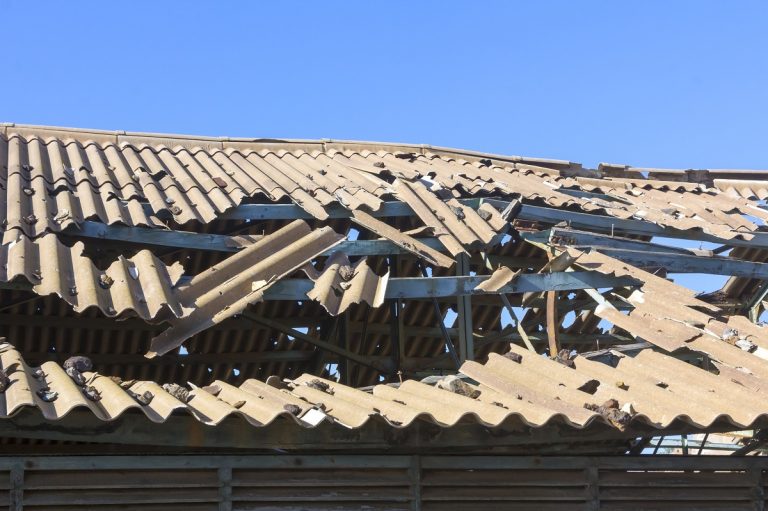- Home collapses can be prevented by recognizing cracks in the foundation.
- Other warning signs include a sagging roof, cracked or bowing walls, and damp or moldy interiors.
- Uneven or bouncing floors could indicate structural damage and risk of home collapse.
- Upgrades such as reinforcing your home’s foundation and installing seismic braces can increase resilience.
- Additional protection layers like hurricane shutters or storm windows can help safeguard against natural disasters.
When it comes to the safety of your home, it is always better to be safe than sorry. Your home is not only a sanctuary for you and your family, but it is also a significant investment that should be protected and maintained adequately. One of the most frightening occurrences for homeowners is the possibility of their homes collapsing. A home collapse can cause massive damage and, in extreme cases, even fatalities. To avoid this terrifying scenario, you must know the signs that your home is at risk of collapse.
Signs of a Collapsing Home
Not many homes collapse without warning. There are always signs that homeowners can pick up on to prevent a collapse from happening in the first place.
1. Cracked Foundation
The foundation of a house is what holds it together and ensures that it remains standing. So, if there are visible cracks in your foundation, it is a surefire sign that your home is at risk of collapsing. Be sure to check for cracks both inside and outside your home.
2. Sagging Roof

A sagging roof is one of the most visible signs of something wrong with your home. A roof is supposed to be straight and level, so if it’s sagging or drooping, it’s a sign that the supporting structures may be damaged.
3. Cracked or Bowing Walls
Just like with the foundation, if there are cracks on the walls or they appear bowing, it’s a sign that there is something wrong with the structure of your home. Be sure to check for cracks, bulges, and other signs of distress on the walls of your home. Additionally, consider adding robust concrete retaining walls to your home. These walls are designed to act as barriers that prevent the soil outside your home from eroding and shifting, which can cause cracks in your foundation.
4. Damp or Moldy Walls and Ceilings
Water damage, whether from a leaky roof or a burst pipe, can compromise the structural integrity of your home. Damp or moldy walls and ceilings are signs of water damage that should not be ignored. Be sure to investigate the source of the problem to prevent it from worsening and damaging your home further.
5. Uneven or Bouncing Floors
If your floors are uneven or sagging, it’s a sign that your home is at risk of collapsing. You can test if your floors bounce by jumping up and down on them. If they do, it’s a sign that your home’s joists or beams may be damaged.
Ways to Make Your Home More Resilient
There are various upgrades you can make your home more resilient. Here are five of those upgrades:
Reinforce Your Home’s Foundation
Your home’s foundation is the foundation of its structural integrity. Therefore, it is essential to reinforce your foundation with steel beams or concrete piers to ensure it can withstand pressure and hold up your home for years.
Install Seismic Braces in the Walls
Seismic braces are specially designed braces that can help protect your walls during earthquakes and other natural disasters. They can be easily installed in your walls to strengthen them against seismic activity.
Install Retaining Walls

Retaining walls are designed to keep soil from eroding and shifting, which can cause cracks in your foundation over time. Installing retaining walls around your home can help prevent this damage.
Invest in Quality Roofing Materials
Your home’s roof is the first defense against water damage and other elements. Invest in quality roofing materials such as metal or slate tiles to ensure your roof is solid and can withstand the elements. This will help keep your home safe for years to come.
Protection Against Natural Disasters
Adding additional layers of protection, such as hurricane shutters or storm windows in areas of the country that experience extreme weather, like hurricanes, is essential to take extra precautions, such as hurricane shutters or storm windows. These added layers of protection will help keep your home safe and secure in a natural disaster.
Safeguarding your home from potential collapse is a critical concern for homeowners. Early detection of signs like a cracked foundation or bouncing floors can help avert significant damage. Regular maintenance and strategic upgrades, such as reinforcing the foundation, can strengthen your home’s resilience. Protection against natural disasters with hurricane shutters or storm windows can further ensure safety. By being proactive and staying vigilant; you can ensure the longevity of your home, safeguarding your investment and the lives within.






